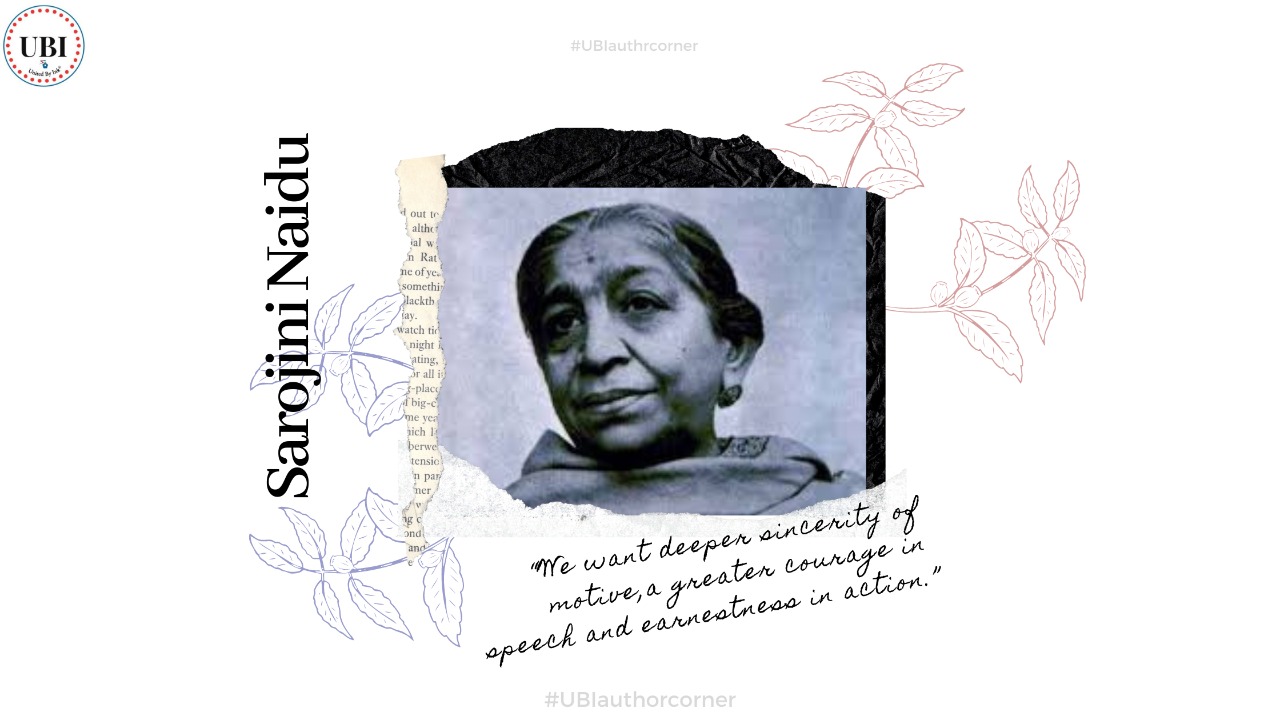
Full name – Sarojini Naidu
Death – 1949, age 70
Nationality – Indian
Sarojini Naidu was an Indian political activist and poet. A proponent of civil rights, women’s emancipation, and anti-imperialistic ideas, she was an important figure in India’s struggle for independence from colonial rule. Naidu’s work as a poet earned her the sobriquet ‘the Nightingale of India’, or ‘Bharat Kokila’ by Mahatma Gandhi because of colour, imagery and lyrical quality of her poetry. She was the first woman to become President of the Indian National Congress and the first woman to achieve the post of Governor of Uttar Pradesh state.
She was born one of eight siblings on 13th February 1879. Her family at that time lived in Hyderabad, India. Dr. Aghomath Chattopadaya, her father was a scientist and philosopher. Varada Sunderi Devi, her mother, was a poet. Sarojini was an extremely intelligent child, becoming fluent in five languages and wrote poems from a young age. Her father wanted her to follow his footsteps in the world of science and mathematics but when she composed a poem which she titled ‘The Lady of the Lake’ which was thirteen hundred lines long she impressed him with her mastery of words and so he began to encourage her. When, a several months later she wrote a play, ‘Maher Muneer’ he sent it to the Nizam (ruler) of Hyderabad. This resulted in her being granted a well-deserved scholarship so that she could study at King’s College in England. Here she expanded her writing to produce articles featuring themes such as the great temples and mountains of India and the complex details of Indian social life.
She returned to India when she was nineteen to be married. Her husband was Dr. Muthyala Govindarajulu Naidu from southern India. Theirs was not a singular caste marriage which was not tolerated at that time. However, the marriage was strong, producing four children.
She joined the Indian freedom struggle after the 1905 partition of Bengal and met noted figures such as Mahatme Ghandi and Pandit Nehru. She travelled extensively to other parts of the world, including Europe and America, in order to speak about the Indian Nationalist cause. In 1919 she visited England under the Indian Home Rule Commission. The following decades saw her become more political, moving around India giving speeches on subjects as varied as welfare of the young, freedom of women and, of course nationalism. Her election as President of the Indian National Congress Party was in 1925.
Her political activities did not, however, dampen her enthusiasm for writing. It was said that her poetry was so beautiful it could also be sung. From 1905 to 1912 she wrote three collections of poems. ‘The Golden Threshold’ (1905) brought her recognition as Bul Bule Hind, or Bharata Khokila, – the Nightingale of India. Sarojini began writing at the age of 12. Her play, Maher Muneer, written in Persian, impressed the Nizam of Kingdom of Hyderabad. In 1905, her first collection of poems, named The Golden Threshold was published. The volume bore an introduction by Arthur Symons. Her poems were admired by prominent Indian politicians like Gopal Krishna Gokhale. Naidu’s poem “In the Bazaars of Hyderabad” was published as a part of The Bird of Time with her other poems in 1912. “In the Bazaars of Hyderabad” was well received by critics, who variously noted Naidu’s visceral use of rich sensory images in her writing. The Feather of The Dawn which contained poems written in 1927 by Naidu was edited and published posthumously in 1961 by her daughter Padmaja Naidu. Moreover, her poem The Gift of India is also noteworthy for its patriotism and the actual environment of the 1915 India.
For the rest of her lifetime she kept up her participation in the fight for India’s freedom. This led to her arrest, in 1942 and imprisonment. When India was given her independence in 1947 Sarojini was made Governor of Uttar Pradesh. She was still working in her office when she had a heart attack and died on March 2nd 1949.
How useful was this post?
Click on a star to rate it!
Average rating 0 / 5. Vote count: 0
No votes so far! Be the first to rate this post.

UBI stands for United By Ink®️. UBI is a Global Platform- the real-time social media interactive forum created for Readers, Writers and Facilitators alike.This platform aims to help creative souls realize their writing goals.
Click on our representatives below to chat on WhatsApp or send us an email to ubi.unitedbyink@gmail.com
